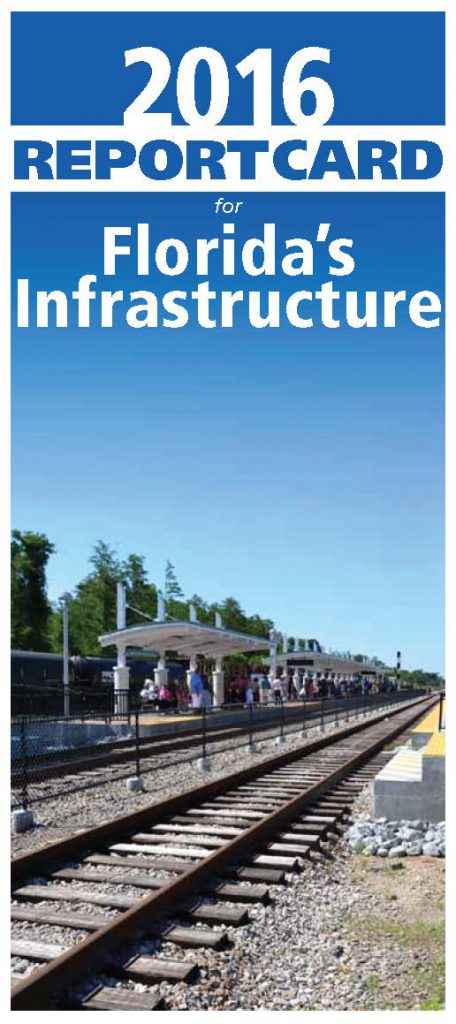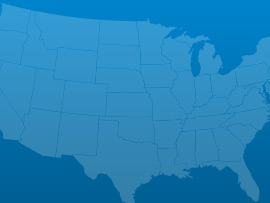
Infrastructure is the backbone of Florida’s economy and a necessary part of every Floridian’s day. The Florida Section of the American Society of Civil Engineers released the 2016 Report Card for Florida’s Infrastructure on Thursday, July 14. The report includes an evaluation of the state’s aviation, bridges, coastal areas, drinking water, energy, ports, roads, schools, stormwater, transit, and wastewater (see grades below).
One of the key findings from this report is that Florida is growing, and the State's infrastructure needs a growth spurt of its own to keep up. Recently Florida’s population has grown at a rate of about 1% per year, adding about 1 million people, which is the equivalent of adding a city the size of Jacksonville every 5 years. Some cities and counties are stepping up their efforts, but more needs to be done across the state by every infrastructure owner. The good news is that investments in areas like bridges and smart technology investment solutions seen in ports and airports are raising Florida's grades. As Florida grows, investing in infrastructure must be Florida’s top priority to continue to be the place people want to live and work as well as attract visitors from around the country and the world.
 Aviation
Aviation Bridges
Bridges Coastal Areas
Coastal Areas Drinking Water
Drinking Water Energy
Energy Roads
Roads Transit
Transit Wastewater
WastewaterA: Exceptional, B: Good, C: Mediocre, D: Poor, F: Failing, ?: Incomplete
Each category was evaluated on the basis of capacity, condition, funding, future need, operation and maintenance, public safety, resilience, and innovation
Aviation
100 public-use airports
Bridges
259 of the 12,070 bridges are structurally deficient
Bridges
$91.30 million in bridge funds came from the Federal Highway Bridge Fund in 2011
Dams
37% of the state regulated dams have an Emergency Action Plan
Dams
79 high hazard dams
Drinking Water
$16.5 billion in drinking water infrastructure needs over the next 20 years
Energy
4.664 gigawatt-hours of renewable energy every year, ranking it 21st
Hazardous Waste
55 sites on the National Priorities List
Inland Waterways
1,540 miles of inland waterways, ranking it 7th nationally
Levees
1,824 miles of levees
Ports
91.5 million short tons of cargo in 2012, ranking it 8th nationally
Public Parks
$31.3 million of unmet needs for its parks system
Rail
14 freight railroads covering 2,907 miles across the state, ranking 23rd nationally by mileage
Roads
$2.5 billion a year in costs to motorists from driving on roads in need of repair, which is $181 /yr per motorist
Roads
15,073 of the state’s 121,829 public roads are major roads, and 4% are in poor condition
Schools
$8.9 billion in estimated school infrastructure funding needs
Transit
252 million annual unlinked passenger trips via transit systems including bus, transit, and commuter trains
Wastewater
$19.6 billion in wastewater infrastructure needs over the next 20 years

March 03, 2017
As the President’s repeated in his address to Congress his pledge to dramatically increase infrastructure spending to the tune of $1 trillion, various Congressional Committees

March 01, 2017
On Tuesday night, President Trump addressed a joint-session of Congress for the first time in his presidency. Infrastructure was among the many issues he discussed.

February 28, 2017
U.S. motorists set a new record for vehicle miles travelled (VMT) in 2016, driving over 3.2 trillion miles, an increase of 70 billion miles from

February 17, 2017
Romantic dates, the Grammy awards and celebrating black history are not the only milestones of this week; the Oroville dam crisis in California and the